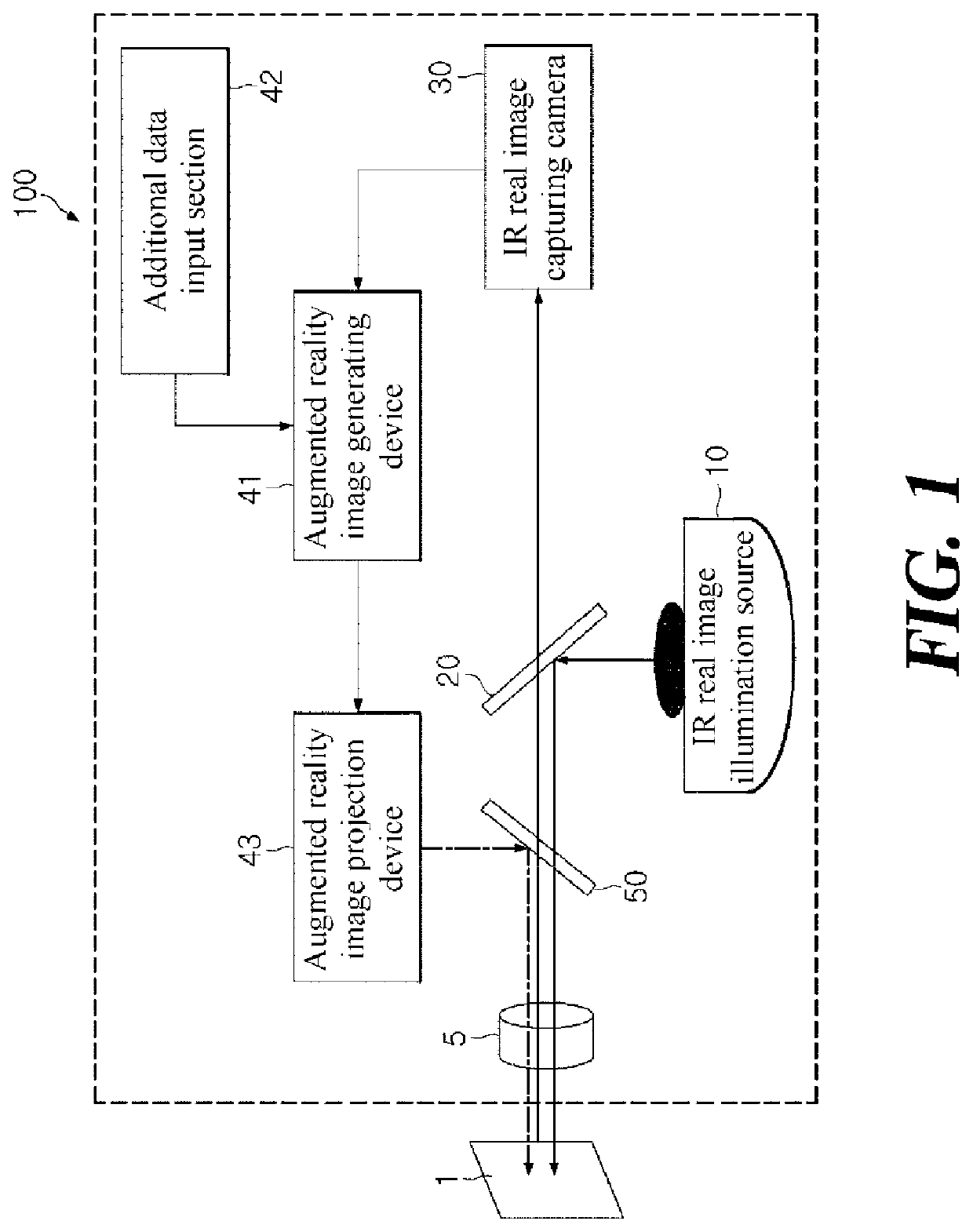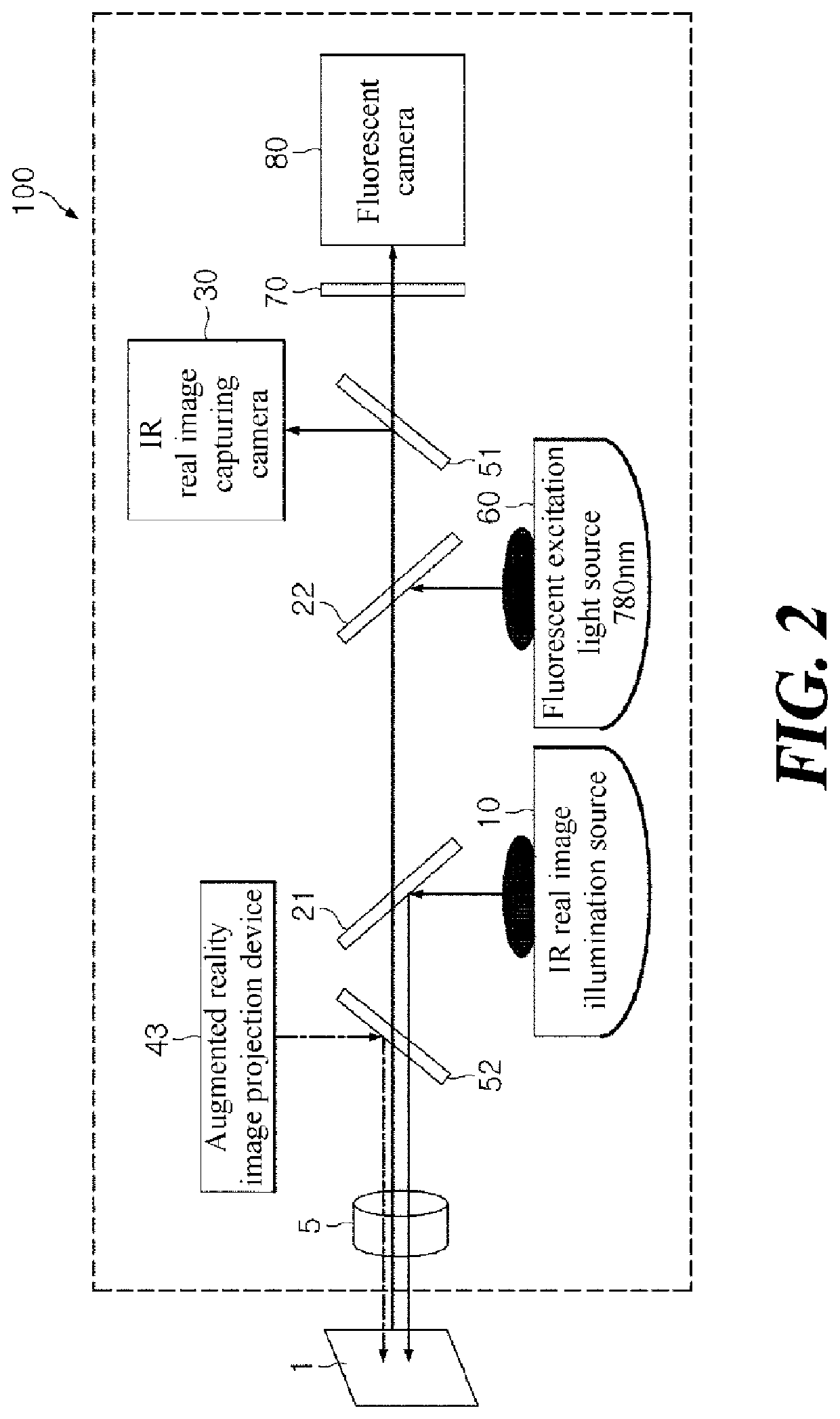Augmented reality image projection system
a projection system and augmented reality technology, applied in medical science, surgery, diagnostics, etc., can solve the problems of visual discord, conventional augmented reality image projection system, complicated process of aligning projection, etc., to eliminate or minimize the use of additional alignment devices, simple and compact system, and high contrast
- Summary
- Abstract
- Description
- Claims
- Application Information
AI Technical Summary
Benefits of technology
Problems solved by technology
Method used
Image
Examples
first embodiment
[0044]FIG. 1 is a schematic diagram of the augmented reality image projection system according to the present disclosure. The AR image projection system includes an IR (infrared) real image illumination source 10, a beam splitter 20, an IR real-image-capturing camera or simply IR real image camera 30, an AR (augmented reality) image generating device 41, an additional data input section 42, an AR image projection device 43, and a dichroic mirror 50.
[0045]The IR real image illumination source 10 provides illumination light for capturing a real image for the IR real image camera 30. In some embodiments, the IR real image illumination source 10 provides infrared illumination light having no interference with visible rays for enabling the AR image projection device 43 to project a contrasty AR image.
[0046]The beam splitter 20, which is a light deflection means, distributes an infrared ray by 50:50 ratio. The beam splitter 20 reflects the light rays from the IR real image illumination so...
second embodiment
[0052]FIG. 2 is a schematic diagram of the AR image projection system among some embodiments of the present disclosure, including an IR real image illumination source 10, a first beam splitter 21, an IR real image camera 30, a first dichroic mirror 51, a fluorescent excitation light source 60, a second beam splitter 22, a fluorescent camera 80, a filter 70, an AR image projection device 43, and a second dichroic mirror 52.
[0053]This second embodiment according to the present disclosure shows an example case of adding a fluorescent image to a virtual image generated by the computer along with the same optical axis of the system. The specific forms and locations of the beam splitters and the dichroic mirrors may vary according to the wavelength of the fluorescence.
[0054]In the second embodiment according to the present disclosure, the fluorescent excitation light source 60 provides excitation light of 780 nm, then the second beam splitter 22 reflects the excitation light and transmits...
PUM
 Login to View More
Login to View More Abstract
Description
Claims
Application Information
 Login to View More
Login to View More - R&D
- Intellectual Property
- Life Sciences
- Materials
- Tech Scout
- Unparalleled Data Quality
- Higher Quality Content
- 60% Fewer Hallucinations
Browse by: Latest US Patents, China's latest patents, Technical Efficacy Thesaurus, Application Domain, Technology Topic, Popular Technical Reports.
© 2025 PatSnap. All rights reserved.Legal|Privacy policy|Modern Slavery Act Transparency Statement|Sitemap|About US| Contact US: help@patsnap.com



